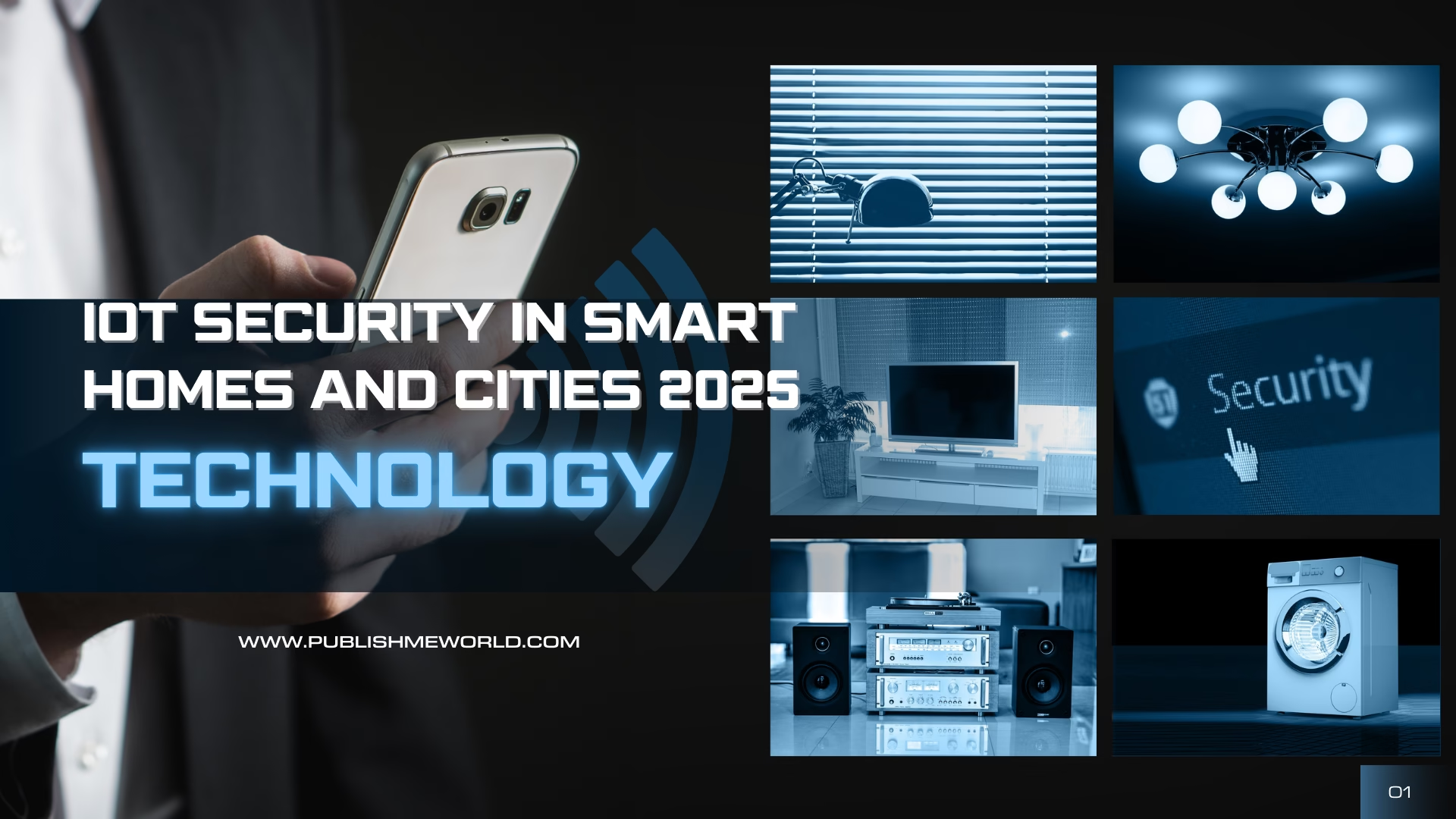Introduction
IoT Security The Internet of Things (IoT) quickly changes how we live and interact with technology. From voice-controlled lights to AI word traffic systems, smart homes and smart cities become ideal. However, the risk of increased connection increases. By 2025, IoT security has become top priority for individuals, businesses and authorities worldwide.
What is IoT security?
IoT refers to safety strategies, protocols, and tools used to protect equipment and networks connected to the Internet of Things ecosystem. These devices often include minimal safety features, making them easy goals for hackers. Security includes protecting data, managing access, preventing infiltration, and securing the unit’s integrity.
Contents
Rise of smart homes and smart cities
Smart Home:
Smart homes are equipped with IoT units such as smart thermostats, door locks, cameras and equipment monitoring. These systems provide convenience and efficiency, but also open new doors for cyber dangers.
Smart City:
Smart cities use IoT technology to manage urban resources, such as electricity, water, transport, and waste, more efficiently. Systems such as smart traffic lights, public safety monitoring, and connected tools are important for modern infrastructure.
State Check:
By 2025, it has been estimated that more than 75 billion IoT units will be added worldwide, with an important part used in smart homes and cities.
Key IoT Security Challenges
Lack of standardization:
Many IoT devices lack uniform safety protocols, causing integration and safety difficult.
Weak password and certification:
Standard or easy to not named credentials publish unsecured equipment for attacks.
Limited processor power:
Most IoT devices have limited CPU and memory, making it difficult to implement advanced safety facilities.
Lack of updates:
Some manufacturers do not provide firmware updates or updates, causing long -term weaknesses.
Scalability issues:
It can be difficult to handle and secure thousands of devices in a city ecosystem.
Common Threats Targeting IoT Devices
DDoS attack:
Hackers use Botnett of infected IoT units to launch massively distributed service (DOS) attacks.
Data Offering:
Poorly safe devices can leak individual or location -based data.
Unit kidnapping:
You can take control of devices such as baby monitor or smart cameras to blackmail cyber criminal spy or blackmail.
MAN-IN-MIDAL ATTACK (MITM):
Unprotected compounds allow the attackers to interfere with communication between equipment.
Ransomware attacks:
The IoT network can be taken as hostages until ransom is paid and hindering services in homes and cities.
Solutions and Best Practices for IoT Security
Use a strong password and enable two -factor authentication (2FA):
Change the default information and add extra confirmation phase.
Firmware update:
Update the devices regularly to fix the weaknesses.
Network Department:
Separate IoT units from sensitive parts of your home or business network.
Use Safe Protocol:
Always as https, SSL/TLS and end-to-end encryption.
IoT- Invest in specific firewalls and antivirus:
Many security providers now offer IoT security solutions.
AI-INCCurat Far Detection:
Advanced smart urban platforms use AI to predict and prevent real-time attacks.
Government Regulations and Standards in 2025
Governments all over the world take IoT security more seriously in 2025. Some major developments include:
- American IoT Cyber Safety Reforms Act – requires unit manufacturers to meet minimal safety standards.
- The EU Cyber Flexibility Act – IoT makes cyber security labeling compulsory for products.
- India’s Personal Data Protection Act (DPDP) – Protects data collected through IoT networks in smart homes and cities.
The purpose of these rules is to implement better production practices, improve the data transparency and punish negligence.
Final Thoughts
As our homes and cities become smarter, the importance of IoT security grows exponentially. While IoT brings convenience and efficiency, it also invites new cyber threats that can disrupt lives and critical infrastructure. By adopting robust security measures and staying updated on best practices, we can ensure that the future of connected living remains safe and sustainable.





